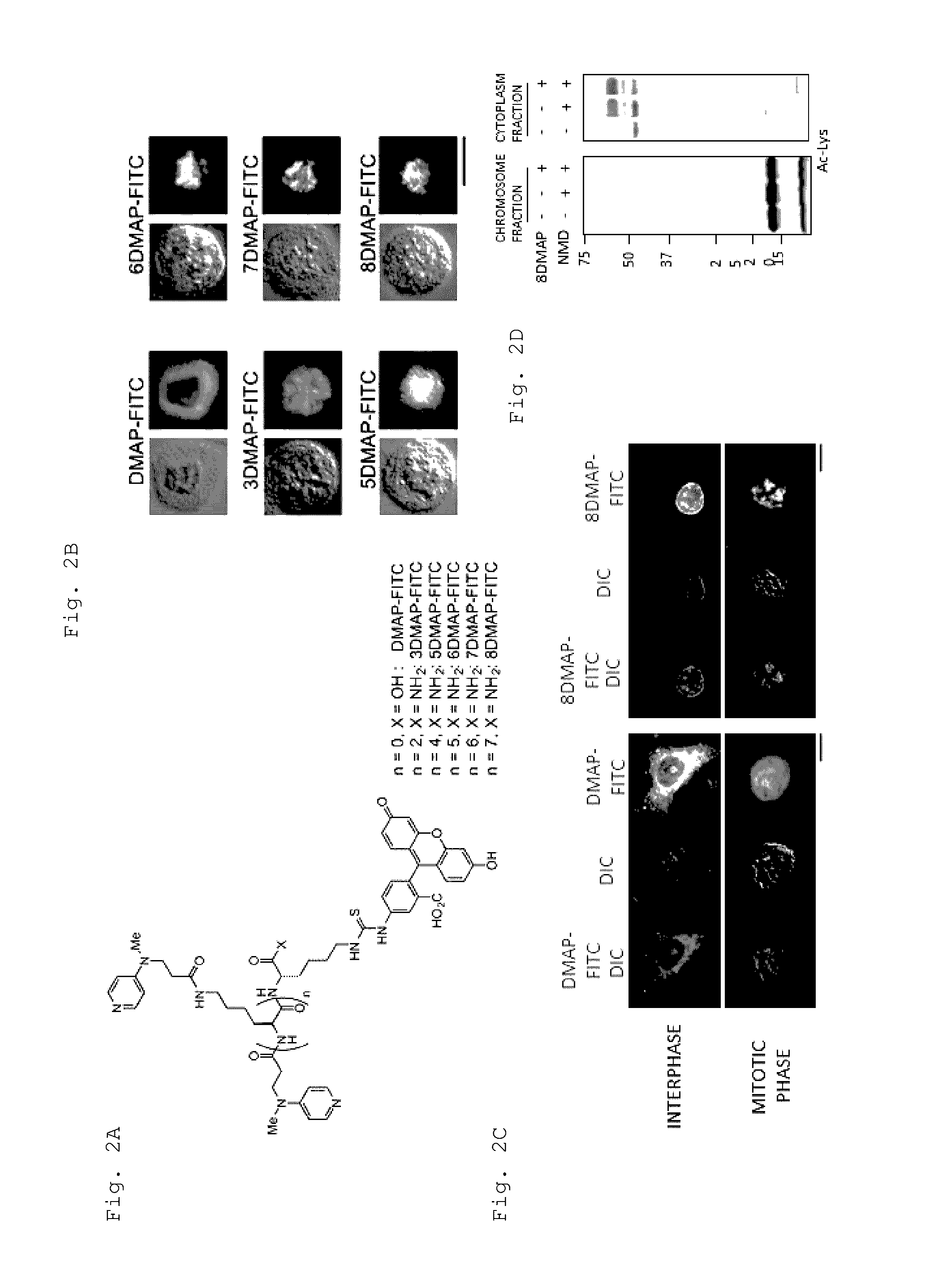Artificial catalyst system substitutable for in vivo acylation function
- Summary
- Abstract
- Description
- Claims
- Application Information
AI Technical Summary
Benefits of technology
Problems solved by technology
Method used
Image
Examples
synthesis example 1
Synthesis of Chromosome-Localizable Acylating Agent
[0127](1) Synthesis of Chromosome-Localizable Acetylating Agent
(i) 2-(2-(2-Azidoethoxy)ethoxy)ethan-1-ol) (Compound 3)
[0128]Triethylene glycol (10.0 g, 66.6 mmol) was dissolved in tetrahydrofuran (THF: 47.6 ml), and triethylamine (NEt3: 7.12 ml, 51.3 mmol) was added thereto at room temperature. Then, the reaction solution was cooled on ice. Methanesulfonyl chloride (MsCl: 1.84 ml, 23.8 mmol) was slowly added dropwise thereto. Subsequently, the resultant was stirred at room temperature for 9 hours. The reaction solution was concentrated, and thereafter the residue was dissolved in ethanol (47.6 ml). To this, sodium azide (3.09 g, 47.6 mmol) was added and refluxed by heating for 11 hours. After the resultant was allowed to cool to room temperature, the reaction solution was concentrated, and the residue was dissolved in ethyl acetate. The organic layer was washed with 24 ml of a saturated aqueous solution of sodium chloride and dried ...
synthesis example 2
Synthesis of Chromosome-Localizable Nucleophilic Catalyst
[0149]
(i) Methyl 3-(methyl-4-pyridylamino)propionate (Compound 15)
[0150]Into a flask, methyl acrylate (9.00 ml, 99.9 mmol) and 4-(methylamino)pyridine (compound 14, 541 mg, 5.00 mmol) were added and refluxed at 85° C. for 19 hours. The solvent was distilled off under reduced pressure, and the residue was purified by silica gel column chromatography (methylene chloride / methanol=15 / 1 to 10 / 1). Thus, the target substance was obtained in the form of a pale yellow oily compound (compound 15, 800 mg, 4.12 mmol, 82% yield). The spectra were consistent with the values in the literature (Bhattacharya, S. & Snehalatha, K. J. Chem. Soc., Perkin Trans. 2 1996, 2021-2025).
(ii) 3-(Methyl-4-pyridylamino)propionic acid (Compound 16)
[0151]Into a flask, methyl 3-(methyl-4-pyridylamino)propionate (compound 15, 777 mg, 4.00 mmol), methanol (5.00 ml), and a 2 M aqueous solution of sodium hydroxide (5.00 ml, 10.0 mmol) were added and stirred at roo...
example 1
Chromosome Protein Acetylation with Chromosome-Localizable Acetylating Agent and Chromosome-Localizable Nucleophilic Catalyst, as Well as Cancer-Cell Specific Cell Cycle Arrest and Analysis on Action Mechanism Thereof
[0159](1) Materials and Methods
[0160](i) Cell Culturing and Cell Fractionation
[0161]Hela cells and MCF7 cells were cultured using Dulbecco's modified Eagle's Medium (DMEM) media supplemented with 10% fetal bovine serum, 100 U / ml of penicillin, and 100 U / ml of streptomycin. The cells were cultured at 37° C. in the presence of 5% CO2.
[0162]The cell fractionation was carried out as follows. Approximately 106 cells were detached from a culture dish by a trypsin treatment. After washed with PBS, the cell pellets were suspended in a cooled, cell lysis buffer [50 mM Tris (pH=7.5), 300 mM NaCl, 0.3% Triton X-100, protease inhibitor cocktail, and 1 mM PMSF], and placed on ice for 30 minutes. After the centrifugation (4° C., 1500 rpm, 2 minutes), the supernatant was collected as ...
PUM
| Property | Measurement | Unit |
|---|---|---|
| Structure | aaaaa | aaaaa |
| Catalytic activity | aaaaa | aaaaa |
Abstract
Description
Claims
Application Information
 Login to View More
Login to View More - R&D
- Intellectual Property
- Life Sciences
- Materials
- Tech Scout
- Unparalleled Data Quality
- Higher Quality Content
- 60% Fewer Hallucinations
Browse by: Latest US Patents, China's latest patents, Technical Efficacy Thesaurus, Application Domain, Technology Topic, Popular Technical Reports.
© 2025 PatSnap. All rights reserved.Legal|Privacy policy|Modern Slavery Act Transparency Statement|Sitemap|About US| Contact US: help@patsnap.com



